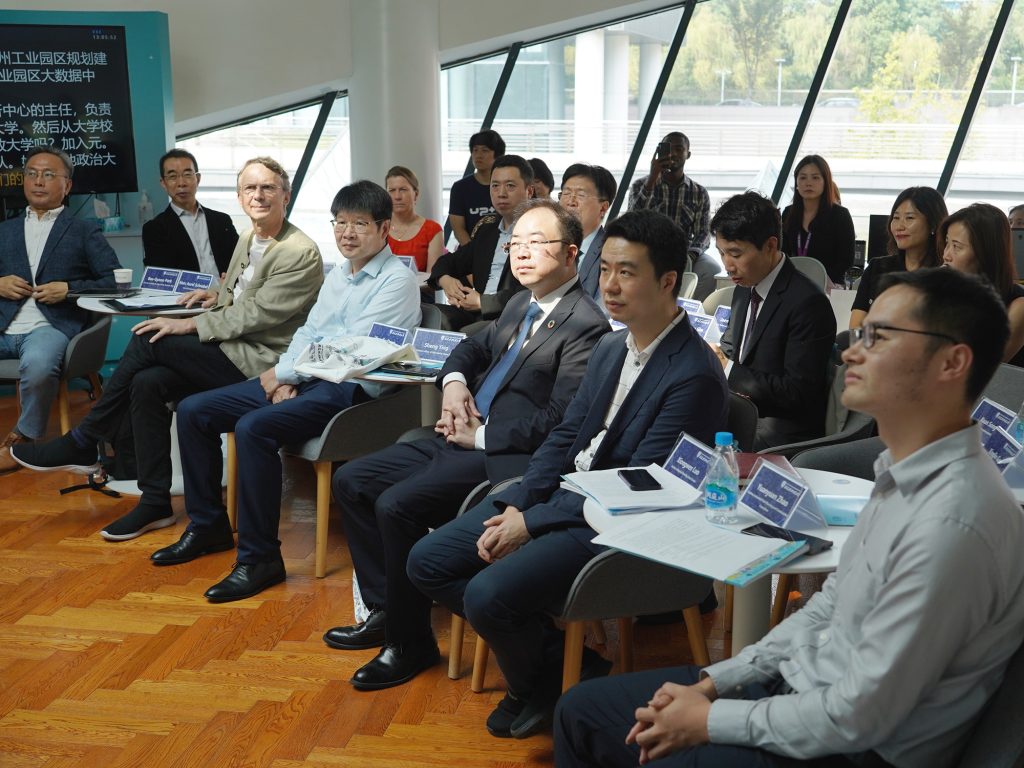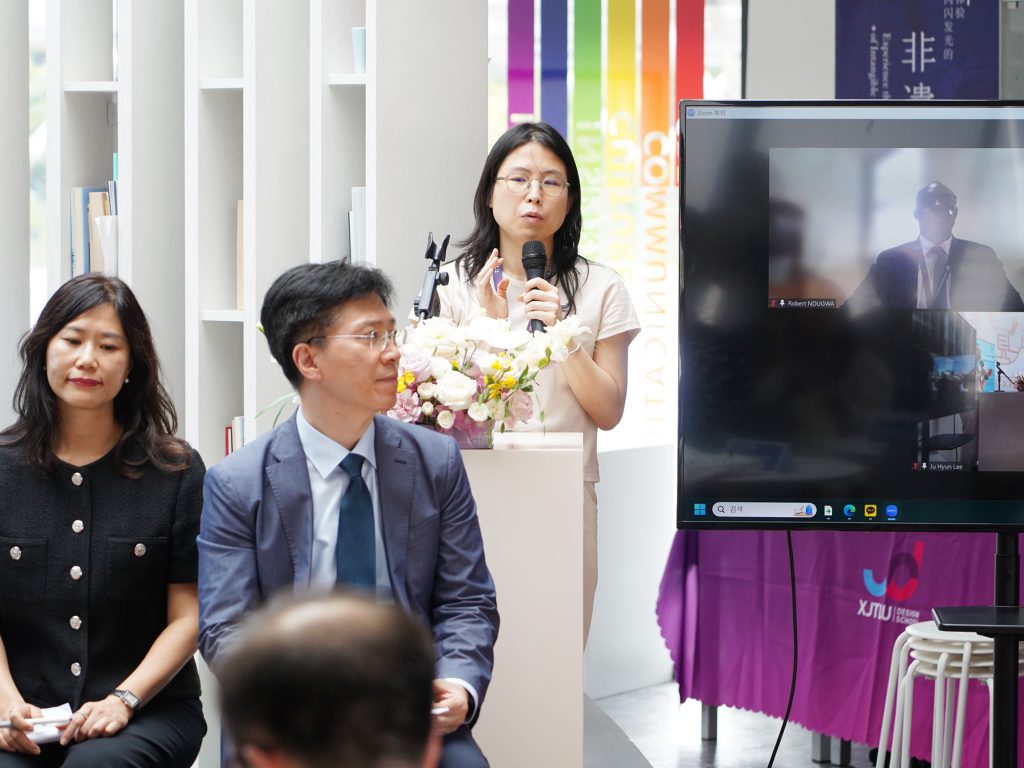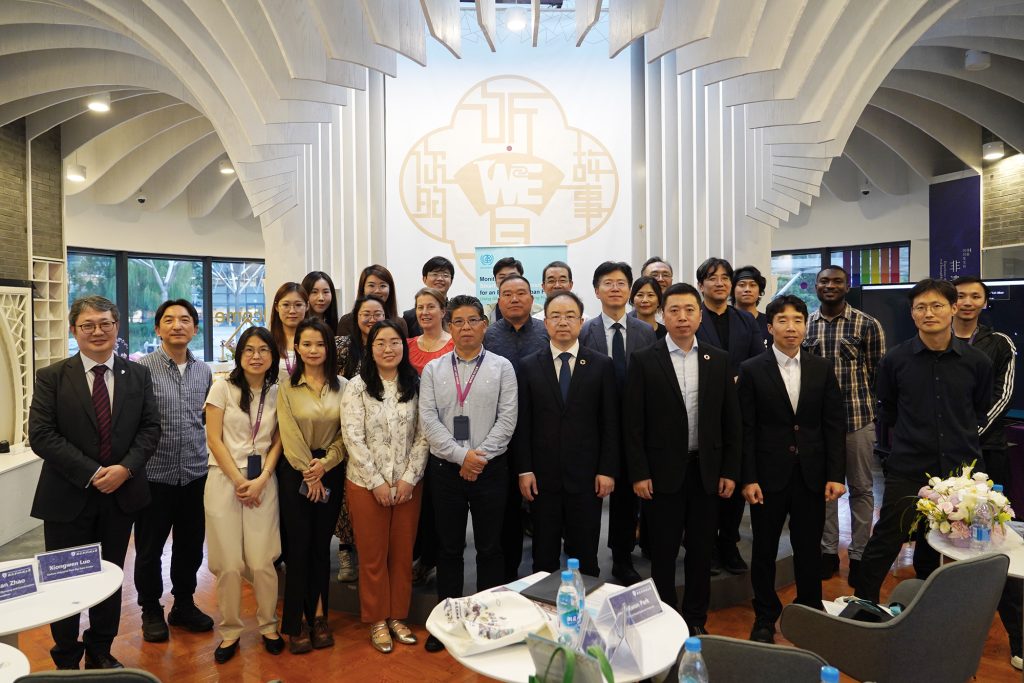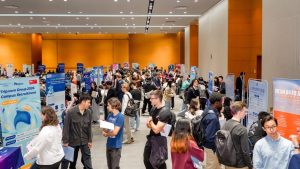04 Nov 2024
By 2030, it’s expected that two thirds of the global population will be living in cities, transforming urban areas into centres of both innovation and inequality. How can we change the way we plan and build our cities so that they are fair and sustainable?
On 18 October, Xi’an Jiaotong-Liverpool University hosted a symposium showcasing the outcomes of a long-standing collaboration between UN-Habitat, the XJTLU Design School, and Seoul National University.

Participants at the symposium. Credit: Yi Qian
The event brought together academics, policymakers, UN-Habitat representatives, and industry leaders for lively discussions on applying “Smart Inclusive Transitions” (SIT) in urban policy to foster equitable development.
In addition to a keynote speech and roundtable dialogue, the symposium also saw the launch of the collaborative publication “Monitoring Smart Inclusive Transition (SIT) Towards Equitable Urban Future, Using the Global Urban Monitoring Framework”.

Introducing a new UN publication. Credit: Yi Qian
Dr Juhyun Lee, an assistant professor at XJTLU and the publication’s lead author, said the book presents SIT “as a key driver for equitable urban futures” by using smart technologies to ensure that all citizens – regardless of ability, location, and socio-economic status – can access, exchange, and benefit from essential services and up-to-date information.
“With SIT analysis, cities can track their progress using the data from UN-Habitat’s Global Urban Monitoring Framework to identify best practices and tailored actions to their unique needs,” she explained. “By adopting SIT, cities can accelerate progress on the Sustainable Development Goals, shaping urban spaces that are truly built by and for everyone.”

Dr Juhyun Lee (speaking). Credit: Yi Qian
In his keynote speech, Professor Bae-Gyoon Park from Seoul National University shared his insights on how infrastructure strategies can help realise ideal cities.
“We emphasise broadening our thinking beyond the approach where smart, inclusive cities merely use new and different technologies to deliver services more efficiently to socially vulnerable groups, such as the disabled,” Park said. Instead, he added, technologies and platforms should be used to create environments that encourage a diverse range of people to participate in problem-solving governance, making everyone an active citizen.

Professor Bae-Gyoon Park. Credit: Yi Qian
Dr Robert Ndugwa, Chief of Data and Analytics at UN-Habitat, who attended the symposium online, said that it’s crucial that hard data is converted into knowledge that informs practitioners and stakeholders when formulating policies.
“We believe very strongly that the report today has done a very good analysis, and I think we are able to apply some of the guidelines for cities to improve the services for local communities,” he said.

Dr Robert Ndugwa (right). Credit: Yi Qian
Dr Paula Pennanen-Rebeiro-Hargrave, Deputy Director of UN-Habitat’s New York Office, sent a congratulatory video message to the symposium, saying that the SIT concept is key to achieving the sustainable development goal that no one, and no place, is left behind.
She said the newly released book makes a valid contribution to the Global Digital Compact, a United Nations framework that aims to establish shared principles for a secure, open, and free digital future, “by exploring how leveraging technology and innovation can foster more inclusive and equitable urban transitions”.

Dr Paula Pennanen-Rebeiro-Hargrave speaks in a video message. Credit: Yi Qian
The UN’s Sustainable Development Goals have long been part of XJTLU’s mission, according to Professor Zhoulin Ruan, Vice President of Academic Affairs at XJTLU, who said that the collaborative publication will benefit not only academia but also industry professionals who apply its knowledge in a wider context.

Professor Zhoulin Ruan. Credit: Yi Qian
Professor Marc Aurel Schnabel, Dean of the XJTLU Design School, said that sustainability is interwoven into the school’s curriculum. “What makes a city different is its inclusiveness, liveability, and connectivity. In the Design School, we paint the vision of what the future is going to look like,” he said.

Professor Marc Aurel Schnabel. Credit: Yi Qian
Experts at the symposium included Sheng Ying from the UN-Habitat China Office, Professor Hongyang Wang from Nanjing University, Professor Haiyun Chen from the UN-Habitat Shanghai Index, Xinglin Gao, Senior Research Investigator of Jiangsu Province, Professor Olivier Sykes from the University of Liverpool, and Dr Kuan Song from the artificial intelligence modelling platform Explorer Global. The event was also livestreamed to more than 2,000 viewers.

Roundtable discussion. Credit: Yi Qian

Participants at the symposium. Credit: Yi Qian
By Yi Qian
Edited by staff editor
04 Nov 2024







